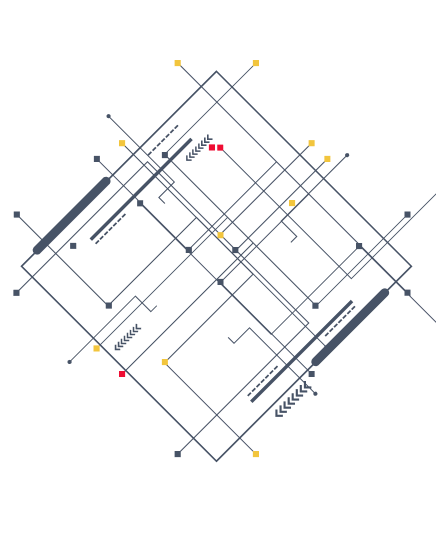Sharding is a horizontal scaling mechanism that allows large volumes of data to be distributed across multiple servers. This approach is used to enhance database performance and scalability. Instead of storing all data on a single server, sharding divides collections into parts, called shards, which are distributed across nodes.
Each shard contains only a subset of the data, enabling queries to be processed faster by leveraging parallel operations across multiple nodes. However, users and applications interact with the data as if it were a single, unified system. This is made possible by the mongos component, which acts as a router: it receives queries, analyzes them, and directs them to the appropriate shards.
Key Elements of Sharding
- Sharded Cluster
A sharded cluster consists of three main components:
- Mongos (Router): A node through which all requests to the sharded cluster pass. It determines which shard should handle a request based on metadata.
- Config Servers: These servers store cluster metadata, including information about shards, shard keys, and data distribution. This metadata is essential for routing requests correctly.
- Shard Nodes: These nodes store the actual data. Each shard can function as an independent replicated set to ensure fault tolerance and high availability.
- Shard Key
A shard key is a field or combination of fields used to determine which shard a document belongs to. For example, if a collection includes a user_id field, it could be chosen as the shard key. The choice of a shard key directly impacts performance because it governs how evenly data is distributed across shards.
Key Requirements for a Shard Key:
- The field must have high cardinality (i.e., many unique values).
- The field should be used in queries to enable efficient routing.
- The field must be immutable since changing the shard key for an existing document is not possible.
Advantages of Sharding
- Horizontal Scaling: You can add more nodes to the cluster to handle increasing data volumes or workload demands.
- Load Distribution: Data and queries are evenly distributed among nodes, reducing the load on individual servers.
- Fault Tolerance: By using replication within each shard, the risk of data loss is minimized, and high availability is ensured.
How Sharding Works
When a new document is added to a sharded cluster, MongoDB uses the value of the shard key to determine which node will store the data. For instance, if the shard key is user_id and the cluster is configured to split data by value ranges, a document with user_id = 500 might be stored in Shard A, while a document with user_id = 1500 might be stored in Shard B.
When queries are executed, mongos uses metadata from the config servers to determine which shards contain the required data. If a query spans multiple shards, mongos aggregates results from each node and returns a combined response.
Configuring a Sharded MongoDB Cluster
A sharded MongoDB cluster enables data distribution across multiple nodes, providing scalability and high performance. To set it up, three main components must be deployed: the router (mongos), configuration servers (config servers), and shard nodes (shard nodes).
Configuration Servers:
These servers store metadata about data distribution and are started with the –configsvr parameter. For fault tolerance, it is recommended to use three configuration servers.
Mongos Routers:
The mongos routers, responsible for query routing, connect to the configuration servers via the –configdb parameter.
Shard Nodes:
Shard nodes, which store the data, are started with the –shardsvr parameter and are added to the cluster using the sh.addShard command in the MongoDB Shell.
After setting up these components, sharding can be enabled for the desired database using the sh.enableSharding command. Collections are then distributed across nodes using a shard key specified with the sh.shardCollection command. This shard key determines how data is distributed among shards.
Monitoring the Cluster:
The cluster’s operation can be monitored using the sh.status command, which provides information on data distribution, node states, and shard keys. This architecture forms a reliable foundation for managing large volumes of data in MongoDB.
Sharding and Working with C++: Connections and Queries
When working with MongoDB from C++, the MongoDB C++ Driver should be used, as it provides tools to interact with a sharded cluster.
Example of Connecting to a Sharded Cluster:
#include <mongocxx/client.hpp>
#include <mongocxx/instance.hpp>
#include <mongocxx/uri.hpp>
int main() {
mongocxx::instance instance{};
// Connect via URI to mongos
auto uri = mongocxx::uri{"mongodb://mongos1:27017,mongos2:27017/?replicaSet=shardedCluster"};
mongocxx::client client{uri};
auto db = client["my_database"];
auto collection = db["my_collection"];
auto result = collection.find_one({});
if (result) {
std::cout << bsoncxx::to_json(*result) << std::endl;
}
return 0;
}
Handling Data in a Sharded Cluster:
- All queries are sent through mongos, which routes them to the appropriate shards.
- The driver transparently handles routing at the application level.
Query Recommendations for a Sharded Cluster:
- Use filters containing the shard key to optimize routing.
- Avoid scatter-gather queries that target all shards simultaneously.
- Leverage indexes, especially on shard keys, to enhance query performance.
Recommendations for Choosing a Shard Key
Selecting an appropriate shard key is a critical step that directly impacts performance and data balancing. Here are the key recommendations:
- High Cardinality:
The shard key should contain a large number of unique values to evenly distribute data across shards. Examples of good choices include user identifiers (user_id) or UUIDs. - Query Frequency:
Choose fields that are frequently used in query filters. This ensures queries can be directed to specific shards, reducing the number of operations. - Data Distribution:
Ensure that data is evenly distributed among shards. For example, using auto-generated identifiers can lead to uneven load distribution, as new records will often fall within the same range. - Immutability:
Shard key fields must not change, as MongoDB does not support updating the shard key of a document after insertion. - Composite Shard Keys:
In some cases, it makes sense to use a compound shard key composed of multiple fields. For example:
sh.shardCollection("database_name.collection_name", { region: 1, user_id: 1 });
- Avoid Hotspots:
Ensure that the shard key does not lead to hotspots. For instance, using the current date as a shard key could overload a single shard.
Performance Optimization in C++ for MongoDB
When a C++ application interacts with a MongoDB sharded cluster, optimizing performance is essential, especially as the cluster scales to handle large data volumes or high query loads. Below are proven strategies for improving performance:
Batch Insertion of Documents
Batching document inserts reduces the number of network calls between the client and MongoDB. Instead of executing multiple insert_one operations, use the insert_many method to send multiple documents in a single request. This reduces network overhead and improves overall performance.
std::vector<bsoncxx::document::value> documents = {
bsoncxx::builder::stream::document{} << "name" << "Alice" << bsoncxx::builder::stream::finalize,
bsoncxx::builder::stream::document{} << "name" << "Bob" << bsoncxx::builder::stream::finalize
};
auto result = collection.insert_many(documents);
if (result) {
std::cout << "Inserted " << result->inserted_count() << " documents." << std::endl;
}
This approach not only conserves network resources but also optimizes MongoDB server utilization by processing inserts as a single batch.
Minimizing Metadata Queries
When working with sharded clusters, metadata queries (e.g., shard key information) can become a bottleneck. Metadata, such as shard configurations and index structures, is stored on configuration servers. Each time a client needs information about which shard to route a query to, it fetches this metadata.
To minimize these queries:
- Cache Shard Keys in Memory: If your shard key is fixed and known in advance, store it in your application and reuse it instead of repeatedly querying MongoDB.
- Use Read Preferences: Direct metadata queries to replica nodes instead of primary nodes, reducing the load on primary servers.
- Refresh Metadata Only on Shard Changes: Update metadata caches only when shard configurations change.
Shard-Level Aggregation
To minimize the data transferred between shards and the client, perform aggregations on the shard level. MongoDB’s aggregation pipeline enables filtering and grouping of data directly on the shards, reducing network and CPU load.
auto pipeline = bsoncxx::builder::stream::array{}
<< bsoncxx::builder::stream::document{}
<< "$match" << bsoncxx::builder::stream::open_document
<< "shardKey" << 123
<< bsoncxx::builder::stream::close_document
<< bsoncxx::builder::stream::finalize
<< bsoncxx::builder::stream::document{}
<< "$group" << bsoncxx::builder::stream::open_document
<< "_id" << "$groupField"
<< "count" << bsoncxx::builder::stream::open_document
<< "$sum" << 1
<< bsoncxx::builder::stream::close_document
<< bsoncxx::builder::stream::close_document
<< bsoncxx::builder::stream::finalize;
auto cursor = collection.aggregate(pipeline);
for (auto&& doc : cursor) {
std::cout << bsoncxx::to_json(doc) << std::endl;
}
This example filters data by shard key ($match) and groups data ($group). All calculations occur on MongoDB’s server side, reducing unnecessary data transfer.
Pre-Filtering Data
In queries, always filter using shard keys. Queries that include a filter on the shard key are directed to the appropriate shard, significantly reducing cluster load. Without a shard key filter, MongoDB must broadcast the query to all shards, increasing latency.
auto filter = bsoncxx::builder::stream::document{}
<< "shardKey" << 123
<< bsoncxx::builder::stream::finalize;
auto result = collection.find_one(filter);
if (result) {
std::cout << "Found document: " << bsoncxx::to_json(*result) << std::endl;
}
Using Indexed Queries
Ensure that frequently used queries are optimized with indexes. In a sharded cluster, indexes on shard keys are particularly important as they directly affect query routing.
auto index = bsoncxx::builder::stream::document{}
<< "shardKey" << 1
<< bsoncxx::builder::stream::finalize;
collection.create_index(index);
Indexes reduce the number of documents to process and decrease query latency.
Benchmarking and Testing Sharded Solutions
To assess the performance of a sharded cluster, it’s essential to conduct regular tests, including both synthetic loads and realistic query scenarios. Tools such as MongoDB Atlas Performance Advisor or custom C++ load-testing scripts help identify performance bottlenecks. Benchmarking should cover read, write, and aggregation queries under resource contention conditions.
Testing the sharded cluster at the application level helps uncover issues with shard keys, uneven data distribution, and latency related to query routing. It is crucial to understand how data is distributed across nodes: homogeneous data improves performance, while uneven distribution can lead to overloads on specific nodes.
It is also recommended to use query profiling by enabling MongoDB’s query profiler. This helps identify slow queries and optimize them by modifying indexes or reworking shard keys. In a C++ application, performance metrics can be integrated using external libraries like Prometheus or gRPC to monitor latency, errors, and throughput.
Conclusion
Effective use of MongoDB sharding requires careful cluster setup and the right choice of shard key, which is critical for scalability and high performance. An improper shard key selection can result in load imbalance and decreased performance.
For C++ developers, it is important to optimize interactions with a sharded cluster, for instance, by using batch document inserts (insert_many), caching metadata, and performing aggregations at the shard level to minimize data transfer. These approaches reduce server load and speed up application performance.
Special attention should be paid to the use of indexes, asynchronous operations, and fault tolerance through error handling. To further enhance performance, connection pooling and asynchronous queries can be applied.
MongoDB sharding, combined with C++, helps effectively scale systems and ensure fault tolerance. Regular monitoring and testing help identify bottlenecks and maintain high database and application performance throughout the system’s lifecycle.









